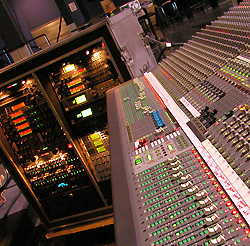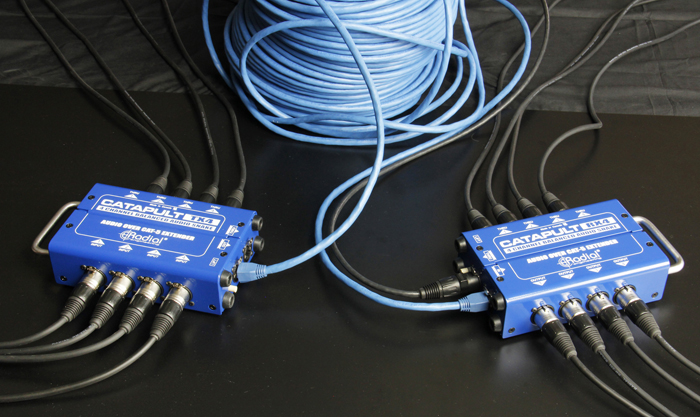
I work with a lot of headline singers who have some background vocalists behind them. One trick that comes in handy when there’s not a lot of outboard compression channels is to run all of the background vocals into a subgroup and compress the group as a whole, but insert a compressor into the lead singer’s channel and then just run them straight to the L+R masters.
That way there’s tailoring available for the lead vocalist and the ability to add compression to the background singers, and without taking up an entire subgroup for one vocalist.
On corporate gigs it’s not uncommon for me to get stuck with a very small analog console with limited channel EQ but there’s a high-profile presenter who needs some drastic EQ help to sound good in the room. If the console has a channel insert jack, I insert an outboard graphic EQ or parametric EQ into the channel.
I carry a stereo 15-band graphic just in case there’s not an extra one provided onsite. This EQ has often come in handy for the mains when the A/V company thinks that a small console with built-in five- to seven-band graphic is all you need and they don’t provide an outboard EQ.
Other outboard gear regularly carried to freelance gigs include a stereo leveler, stereo compressor/gate and multi-channel feedback suppression processor. While some audio folks laugh when they see my feedback unit, they soon realize that it does a great job taming wireless lavalier mics because each of the 24 filters can have a bandwidth as narrow as 1/80 of an octave. It works great when inserted on the lavalier subgroup.
Another limitation on some smaller analog consoles is a lack of buses. More than a few times I’ve been mixing monitors from a smaller front of house board and have run out of aux sends. If the console has a matrix section, it can be used to set up side fill mixes, and in a pinch, some individual performer mixes.
Staying Organized
Even the smallest digital consoles usually include comps and gates on every channel but many of them lack VCAs (also called DCAs) or subgroups. An easy way to get subgroup control on a digital board that does not offer groups is to use a post fade aux bus. Simply assign every input channel that you want in the group to the same post fade aux send. Make sure to un-assign those channels from routing to the main L+R outputs. Now assign the output of that aux send to the L+R mains and it acts as a subgroup.
While the aux master may be on a different layer, many consoles have a user-configurable layer that can be tailored to specific needs. For example, I place my “money channels” like lead vocalist, lead guitar, podium, presenter wireless and others on the user layer, along with any effects masters and subgroups or VCA/DCAs. This way, mixing can be done mostly on a single layer.
One of the few drawbacks with digital desks, at least for me, comes when using a digital audio network instead of an analog snake. The problem is that an intercom channel or lighting DMX can’t be run on the same cable as can be done if the analog snake has extra channels. Sure, the solution is running a few single cables from FOH to backstage, but finding hundreds of feet of extra XLR cable onsite can be an exercise in futility and carrying around hundreds of feet of “extra” cable as a freelancer is not an option.
My solution is to deploy a snake system that provides four analog audio runs down a single shielded Cat cable. A small reel with 100 meters of cable makes for a compact package I can keep in my truck. Radial Engineering, Whirlwind and others offer nice 4-channel snake boxes for Cat cable. In addition to comms and DMX, they work great for analog mics, line level returns and even AES signals.
Speaking of networks, Dante has become the de facto standard of audio networks, so I carry a few small gigabit switches to shows to help route signals. I also just added a small wi-fi router to my bag. It comes in handy for interfacing an iPad for remote console control and might also come in handy with the new version (3.10) of Dante Controller able to connect to networks over wi-fi.
Finally, for almost every gig, I bring a small utility mixer just in case the console has a problem or a submixer is needed (or would come in handy). In the past this was an 8-channel analog unit but recently has switched to a very compact digital mixer. With 16 inputs that have 4-band EQ and onboard multitrack recording, I sometimes just replace the console provided by the A/V company with my own mixer and a small rack.
The key as a freelance audio technician is to be able to adapt to the equipment that is provided no matter if analog or digital, and to be prepared outside of that to make the show happen, and as well as possible. Making the client happy insures I get another call.
Senior contributing editor Craig Leerman is the owner of Tech Works, a production company based in Las Vegas.

